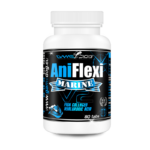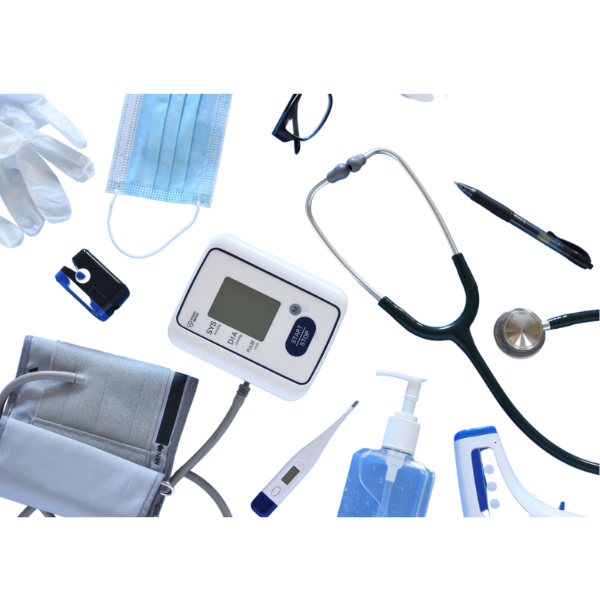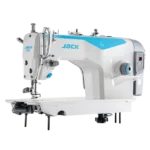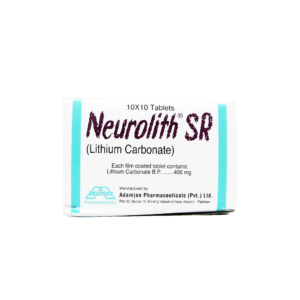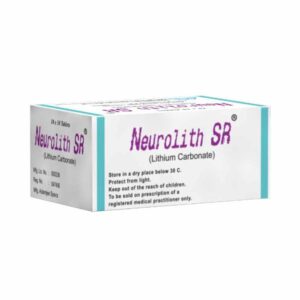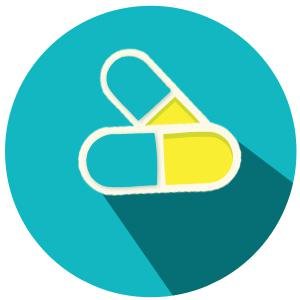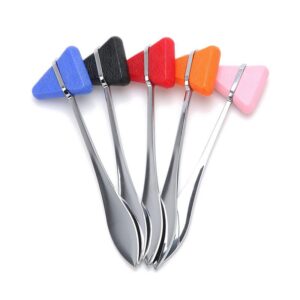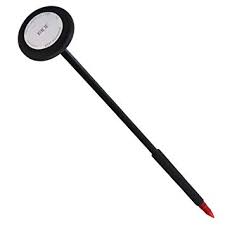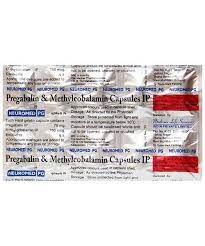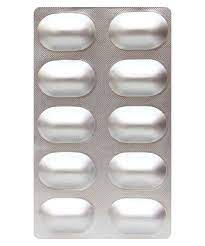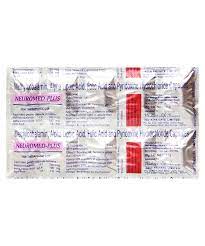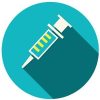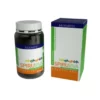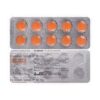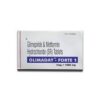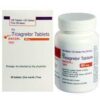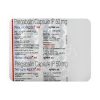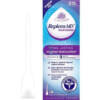-
Bomastren 750 mg Injection 3ml ₦586,500.00 QTY: 1
-
CISCAP 750MG TAB 10`S ₦3,712.50 QTY: 1
-
NOVABLOCK 500mg Tablet 10?s ₦37,400.00 QTY: 1
-
Spiruviva Food Supplement 540 Tablets ₦72,675.00 QTY: 1
-
ETOTROY 90MG STRIP OF 10 TABLETS ₦3,403.25 QTY: 1
-
DOLO COLD PEAD NASAL DROPS ₦722.00 QTY: 1
-
GLIMADAY FORTE 1MG TABLET ₦2,980.25 QTY: 1
-
AXCER 90 MG TAB 180`S ₦8,652.00 QTY: 1
-
NEUROKEM 50MG CAPSULE ₦1,631.53 QTY: 1
-
Replens Vaginal Moisturiser Applicator Pack - 6 Tubes ₦27,100.00 QTY: 1
Customer matched zone "Lagos Delivery Options"
Sort by:
244657–244672 of 396646 Results
-
SaleNeurolin CR 165 mgNeurolin CR 165 mg is indicated for: Neuropathic pain linked to diabetic peripheral neuropathy is one condition for which Neurolin CR 165 mg is prescribed (DPN) Neuralgia following shingles (PHN) Treatment of partial-onset seizures in patients older than one month with adjunctive therapy Fibromyalgia neuropathic pain brought on by spinal cord damage. Neuropathic pain linked to diabetic peripheral neuropathy is one condition for which Neurolin CR 165 mg is prescribed (DPN) Neuralgia following shingles (PHN) Treatment of partial-onset seizures in patients older than one month with adjunctive therapy Fibromyalgia the neuropathic pain brought on by spinal cord damage The following conditions are treated with Neurolin CR 165 mg CR tablets: Neuropathic pain brought on by diabetic peripheral neuropathy (DPN) Neuralgia following shingles (PHN)Theropeutic ClassSupplemental antiepileptic medicationsPharmacologyGamma-amino butyric acid, an inhibitory neurotransmitter, is the structural basis of the drug Neurolin CR 165 mg (GABA). The GABAA, GABAB, or benzodiazepine receptors are not directly bound by it. In the tissues of the central nervous system, Neurolin CR 165 mg binds to the alpha-2-delta site (an auxiliary subunit of voltage-gated calcium channels) with a high affinity. Neurolin CR 165 mg has a 90% oral bioavailability that is dose-independent. In people with normal renal function, it is largely excreted from the body through the kidneys as an unaltered medication with a mean elimination half-life of 6.3 hours.Dosage & Administration of Neurolin CR 165 mgNeuropathic pain associated with diabetic peripheral neuropathy: The maximum recommended dose of Neurolin CR 165 mg is 100 mg three times a day (300 mg/day) in patients with creatinine clearance of at least 60 mL/min. Dosing should begin at 50 mg three times a day (150 mg/day) and may be increased to 300 mg/day within 1 week based on efficacy and tolerability.Post-herpetic neuralgia: The recommended dose of Neurolin CR 165 mg is 75 to 150 mg two times a day, or 50 to 100 mg three times a day (150 to 300 mg/day) in patients with creatinine clearance of at least 60 mL/min. Dosing should begin at 75 mg two times a day, or 50 mg three times a day (150 mg/day) and may be increased to 300 mg/day within 1 week based on efficacy and tolerability. Adjunctive therapy for adult patients with partial onset seizures: In general, it is recommended that patients be started on a total daily dose no greater than 150 mg/day (75 mg two times a day, or 50 mg three times a day). Based on individual patient response and tolerability, the dose may be increased to a maximum dose of 600 mg/day.Management of Fibromyalgia: The recommended dose of Neurolin CR 165 mg for fibromyalgia is 300 to 450 mg/day. Dosing should begin at 75 mg two times a day (150 mg/day) and may be increased to 150 mg two times a day (300 mg/day) within 1 week based on efficacy and tolerability.Neuropathic pain associated with spinal cord injury: The recommended dose range is 150 to 600 mg/day. The recommended starting dose is 75 mg two times a day (150 mg/day). The dose may be increased to 150 mg two times a day (300 mg/day) within 1 week based on efficacy and tolerability. Neurolin CR 165 mg capsules can be taken without regards to meals.Dosage of Neurolin CR 165 mgNeuropathic pain associated with diabetic peripheral neuropathy in adults (DPN): The maximum recommended dose of Neurolin CR 165 mg is 100 mg three times a day (300 mg/day) in patients with creatinine clearance of at least 60 ml/min. Dosing should begin at 50 mg three times a day (150 mg/day). The dose may be increased to 300 mg/day within 1 week based on efficacy and tolerability. Begin dosing of Neurolin CR 165 mg CR capsule at 165 mg once daily and increase to 330 mg once daily within 1 week based on individual patient response and tolerability. The maximum recommended dose of Neurolin CR 165 mg CR capsule is 330 mg once daily.Postherpetic neuralgia in adults (PHN): The recommended dose of Neurolin CR 165 mg is 75 to 150 mg two times a day or 50 to 100 mg three times a day (150 to 300 mg/day) in patients with creatinine clearance of at least 60 ml/min. Dosing should begin at 75 mg two times a day or 50 mg three times a day (150 mg/day). The dose may be increased to 300 mg/day within 1 week based on efficacy and tolerability. Patients who do not experience sufficient pain relief following 2 to 4 weeks of treatment with 300 mg/day and who are able to tolerate Neurolin CR 165 mg, may be treated with up to 300 mg two times a day or 200 mg three times a day (600 mg/day).Begin dosing of Neurolin CR 165 mg CR capsule at 165 mg once daily and increase to 330 mg once daily within 1 week based on individual patient response and tolerability. Patients who do not experience sufficient pain relief following 2 to 4 weeks of treatment with 330 mg once daily and who are able to tolerate Neurolin CR 165 mg CR capsule, may be treated with up to 660 mg once daily. In view of the dose-dependent adverse reactions and the higher rate of treatment discontinuation due to adverse reactions, dosing above 330 mg/day should be reserved only for those patients who have on-going pain and are tolerating 330 mg daily. The maximum recommended dose of Neurolin CR 165 mg CR capsule is 660 mg once daily.Management of fibromyalgia in adults: The recommended dose of Neurolin CR 165 mg is 300 to 450 mg/day. Dosing should begin at 75 mg two times a day (150 mg/day). The dose may be increased to 150 mg two times a day (300 mg/day) within 1 week based on efficacy and tolerability. Patients who do not experience sufficient benefit with 300 mg/day may be further increased to 225 mg two times a day (450 mg/day).Neuropathic pain associated with spinal cord injury in adults: The recommended dose range of Neurolin CR 165 mg is 150 to 600 mg/day. The recommended starting dose is 75 mg two times a day (150 mg/day). The dose may be increased to 150 mg two times a day (300 mg/day) within 1 week based on efficacy and tolerability. Patients who do not experience sufficient pain relief after 2 to 3 weeks of treatment with 150 mg two times a day and who tolerate Neurolin CR 165 mg may be treated with up to 300 mg two times a day. Conversion from Neurolin CR 165 mg capsules to Neurolin CR 165 mg CR capsule tablet: When switching from Neurolin CR 165 mg capsules to Neurolin CR 165 mg CR capsule tablet on the day of the switch, instruct patients to take their morning dose of Neurolin CR 165 mg capsule as prescribed and initiate Neurolin CR 165 mg CR capsule therapy after an evening meal.Neurolin CR 165 mg tablet total daily dose (dosed 2 or 3 times daily): Neurolin CR 165 mg CR capsule capsule dose (dosed once a day) 75 mg/daily: 82.5 mg/day 150 mg/daily: 165 mg/day 225 mg/daily: 247.5 mg/day 300 mg/daily: 330 mg/day 450 mg/daily: 495 mg/day 600 mg/daily: 660 mg/dayAdministration of Neurolin CR 165 mgRoute of administration: Neurolin CR 165 mg is administered orally. Taking it with or without food is acceptable. The Neurolin CR 165 mg CR tablet should be taken after dinner. It shouldn't be divided, crushed, or chewed; it should be consumed whole. Patients should take their regular dose of Neurolin CR 165 mg CR after a snack if they forget to take their evening mealtime dose of Neurolin CR 165 mg CR. If they forget to take Neurolin CR 165 mg CR before going to bed, they should take their regular dose of Neurolin CR 165 mg CR after breakfast. They should take their regular dose of Neurolin CR 165 mg CR at the regular time that evening after an evening meal if they forget to take their daily dose of Neurolin CR 165 mg CR after the morning meal.Interaction of Neurolin CR 165 mgDrug interaction with medication: There are not anticipated to be many significant pharmacokinetic medication interactions involving Neurolin CR 165 mg. No relevant drug-food or other-drug interactions.ContraindicationsThose with a known hypersensitivity to Neurolin CR 165 mg or any of its ingredients should not take Neurolin CR 165 mg.Side Effects of Neurolin CR 165 mgDizziness, somnolence, dry mouth, edema, impaired vision, weight gain, and aberrant thinking (mainly difficulties with concentration/attention) are the most frequent adverse effects in adults. Increased weight and increased hunger are the most frequent adverse reactions in children receiving therapy for partial-onset seizures.Pregnancy & LactationNeurolin CR 165 mg is classified as a C pregnancy drug. Hence, it should only be used if the potential benefits outweigh the hazards to the fetus. Neurolin CR 165 mg should only be administered to nursing mothers if the risks are clearly outweighed by the potential benefits. Neurolin CR 165 mg may be released through breast milk like other medications.Precautions & WarningsAngioedema (swelling of the throat, head, and neck, for example) can happen and is sometimes linked to respiratory compromise that requires immediate medical attention. In these circumstances, Neurolin CR 165 mg should be stopped promptly. Also, if hypersensitivity reactions like hives, dyspnea, or wheezing manifest, Neurolin CR 165 mg should be stopped right away. Neurolin CR 165 mg and other antiepileptic medications raise the chance of having suicidal ideas or actions. Neurolin CR 165 mg may cause respiratory depression when used concurrently with CNS depressants or when there is underlying respiratory impairment. Patients must be watched closely, and dosage needs to be modified as necessary. Neurolin CR 165 mg may make a patient drowsy and woozy, making it difficult for them to drive or operate machinery. Neurolin CR 165 mg may become more frequent in seizures or have other negative effects if it is abruptly stopped. Neurolin CR 165 mg should be discontinued gradually over at least two weeks.Overdose Effects of Neurolin CR 165 mgReduced consciousness, melancholy or anxiety, confusional mood, agitation, and restlessness are signs and symptoms of a Neurolin CR 165 mg overdose. As well as heart block and seizures, there have been reports. There isn't a particular remedy. If necessary, emesis or stomach lavage may be used to try to eliminate any unabsorbed medication; normal safety procedures should be followed to preserve the airway. It is necessary to provide the patient with general supportive care, which includes keeping track of their vital signs and assessing their clinical condition.Storage ConditionsMaintain in a cool, dry location (below 30?C), away from light and moisture. Keep out of children's reach.Use In Special PopulationsNeurolin CR 165 mg's efficacy and safety in pediatric patients have not been shown.Drug ClassesAdjunct anti-epileptic drugs, Primary anti-epileptic drugsMode Of ActionGamma-aminobutyric acid, an inhibitory neurotransmitter, is the structural basis of the drug Neurolin CR 165 mg (GABA). It doesn't directly bind to benzodiazepine, GABAA, or GABAB receptors. In the tissues of the central nervous system, Neurolin CR 165 mg binds to the alpha2-delta site (an auxiliary subunit of voltage-gated calcium channels) with a high affinity. Neurolin CR 165 mg's mechanism of action is still unknown, although findings from animal research point to a potential role for binding to the alpha2-delta subunit in the drug's anti-nociceptive and anti-seizure properties.PregnancyNeurolin CR 165 mg use in expectant women has not been adequately and carefully studied. The potential harm to a fetus should be disclosed to expectant mothers. Neurolin CR 165 mg has been found in trace levels in the milk of nursing women. Breastfeeding is not advised while using Neurolin CR 165 mg due to the potential risk of tumorigenicity.Pediatric UsesUsage in children and adolescents: Safety and efficacy for the treatment of fibromyalgia, postherpetic neuralgia, neuropathic pain associated with spinal cord injury, and neuropathic pain associated with diabetic peripheral neuropathy in pediatric patients have not been proven. The safety and efficacy of supplementary therapy for partial onset seizures in pediatric children younger than one month of age have not been established. Neurolin CR 165 mg extended-release tablet safety and efficacy in pediatric patients have not been shown.Sku: 1736097765-1597
Neurolin CR165 mg
₦11,550.00Original price was: ₦11,550.00.₦10,395.00Current price is: ₦10,395.00.₦11,550.00Original price was: ₦11,550.00.₦10,395.00Current price is: ₦10,395.00. Add to basket Quick View -
SaleNeurolin CR 82.5 mgNeurolin CR 82.5 mg is indicated for: Neuropathic pain linked to diabetic peripheral neuropathy is one condition for which Neurolin CR 82.5 mg is prescribed (DPN) Neuralgia following shingles (PHN) Treatment of partial-onset seizures in patients older than one month with adjunctive therapy Fibromyalgia neuropathic pain brought on by spinal cord damage. Neuropathic pain linked to diabetic peripheral neuropathy is one condition for which Neurolin CR 82.5 mg is prescribed (DPN) Neuralgia following shingles (PHN) Treatment of partial-onset seizures in patients older than one month with adjunctive therapy Fibromyalgia the neuropathic pain brought on by spinal cord damage The following conditions are treated with Neurolin CR 82.5 mg CR tablets: Neuropathic pain brought on by diabetic peripheral neuropathy (DPN) Neuralgia following shingles (PHN)Theropeutic ClassSupplemental antiepileptic medicationsPharmacologyGamma-amino butyric acid, an inhibitory neurotransmitter, is the structural basis of the drug Neurolin CR 82.5 mg (GABA). The GABAA, GABAB, or benzodiazepine receptors are not directly bound by it. In the tissues of the central nervous system, Neurolin CR 82.5 mg binds to the alpha-2-delta site (an auxiliary subunit of voltage-gated calcium channels) with a high affinity. Neurolin CR 82.5 mg has a 90% oral bioavailability that is dose-independent. In people with normal renal function, it is largely excreted from the body through the kidneys as an unaltered medication with a mean elimination half-life of 6.3 hours.Dosage & Administration of Neurolin CR 82.5 mgNeuropathic pain associated with diabetic peripheral neuropathy: The maximum recommended dose of Neurolin CR 82.5 mg is 100 mg three times a day (300 mg/day) in patients with creatinine clearance of at least 60 mL/min. Dosing should begin at 50 mg three times a day (150 mg/day) and may be increased to 300 mg/day within 1 week based on efficacy and tolerability.Post-herpetic neuralgia: The recommended dose of Neurolin CR 82.5 mg is 75 to 150 mg two times a day, or 50 to 100 mg three times a day (150 to 300 mg/day) in patients with creatinine clearance of at least 60 mL/min. Dosing should begin at 75 mg two times a day, or 50 mg three times a day (150 mg/day) and may be increased to 300 mg/day within 1 week based on efficacy and tolerability. Adjunctive therapy for adult patients with partial onset seizures: In general, it is recommended that patients be started on a total daily dose no greater than 150 mg/day (75 mg two times a day, or 50 mg three times a day). Based on individual patient response and tolerability, the dose may be increased to a maximum dose of 600 mg/day.Management of Fibromyalgia: The recommended dose of Neurolin CR 82.5 mg for fibromyalgia is 300 to 450 mg/day. Dosing should begin at 75 mg two times a day (150 mg/day) and may be increased to 150 mg two times a day (300 mg/day) within 1 week based on efficacy and tolerability.Neuropathic pain associated with spinal cord injury: The recommended dose range is 150 to 600 mg/day. The recommended starting dose is 75 mg two times a day (150 mg/day). The dose may be increased to 150 mg two times a day (300 mg/day) within 1 week based on efficacy and tolerability. Neurolin CR 82.5 mg capsules can be taken without regards to meals.Dosage of Neurolin CR 82.5 mgNeuropathic pain associated with diabetic peripheral neuropathy in adults (DPN): The maximum recommended dose of Neurolin CR 82.5 mg is 100 mg three times a day (300 mg/day) in patients with creatinine clearance of at least 60 ml/min. Dosing should begin at 50 mg three times a day (150 mg/day). The dose may be increased to 300 mg/day within 1 week based on efficacy and tolerability. Begin dosing of Neurolin CR 82.5 mg CR capsule at 165 mg once daily and increase to 330 mg once daily within 1 week based on individual patient response and tolerability. The maximum recommended dose of Neurolin CR 82.5 mg CR capsule is 330 mg once daily.Postherpetic neuralgia in adults (PHN): The recommended dose of Neurolin CR 82.5 mg is 75 to 150 mg two times a day or 50 to 100 mg three times a day (150 to 300 mg/day) in patients with creatinine clearance of at least 60 ml/min. Dosing should begin at 75 mg two times a day or 50 mg three times a day (150 mg/day). The dose may be increased to 300 mg/day within 1 week based on efficacy and tolerability. Patients who do not experience sufficient pain relief following 2 to 4 weeks of treatment with 300 mg/day and who are able to tolerate Neurolin CR 82.5 mg, may be treated with up to 300 mg two times a day or 200 mg three times a day (600 mg/day).Begin dosing of Neurolin CR 82.5 mg CR capsule at 165 mg once daily and increase to 330 mg once daily within 1 week based on individual patient response and tolerability. Patients who do not experience sufficient pain relief following 2 to 4 weeks of treatment with 330 mg once daily and who are able to tolerate Neurolin CR 82.5 mg CR capsule, may be treated with up to 660 mg once daily. In view of the dose-dependent adverse reactions and the higher rate of treatment discontinuation due to adverse reactions, dosing above 330 mg/day should be reserved only for those patients who have on-going pain and are tolerating 330 mg daily. The maximum recommended dose of Neurolin CR 82.5 mg CR capsule is 660 mg once daily.Management of fibromyalgia in adults: The recommended dose of Neurolin CR 82.5 mg is 300 to 450 mg/day. Dosing should begin at 75 mg two times a day (150 mg/day). The dose may be increased to 150 mg two times a day (300 mg/day) within 1 week based on efficacy and tolerability. Patients who do not experience sufficient benefit with 300 mg/day may be further increased to 225 mg two times a day (450 mg/day).Neuropathic pain associated with spinal cord injury in adults: The recommended dose range of Neurolin CR 82.5 mg is 150 to 600 mg/day. The recommended starting dose is 75 mg two times a day (150 mg/day). The dose may be increased to 150 mg two times a day (300 mg/day) within 1 week based on efficacy and tolerability. Patients who do not experience sufficient pain relief after 2 to 3 weeks of treatment with 150 mg two times a day and who tolerate Neurolin CR 82.5 mg may be treated with up to 300 mg two times a day. Conversion from Neurolin CR 82.5 mg capsules to Neurolin CR 82.5 mg CR capsule tablet: When switching from Neurolin CR 82.5 mg capsules to Neurolin CR 82.5 mg CR capsule tablet on the day of the switch, instruct patients to take their morning dose of Neurolin CR 82.5 mg capsule as prescribed and initiate Neurolin CR 82.5 mg CR capsule therapy after an evening meal.Neurolin CR 82.5 mg tablet total daily dose (dosed 2 or 3 times daily): Neurolin CR 82.5 mg CR capsule capsule dose (dosed once a day) 75 mg/daily: 82.5 mg/day 150 mg/daily: 165 mg/day 225 mg/daily: 247.5 mg/day 300 mg/daily: 330 mg/day 450 mg/daily: 495 mg/day 600 mg/daily: 660 mg/dayAdministration of Neurolin CR 82.5 mgRoute of administration: Neurolin CR 82.5 mg is administered orally. Taking it with or without food is acceptable. The Neurolin CR 82.5 mg CR tablet should be taken after dinner. It shouldn't be divided, crushed, or chewed; it should be consumed whole. Patients should take their regular dose of Neurolin CR 82.5 mg CR after a snack if they forget to take their evening mealtime dose of Neurolin CR 82.5 mg CR. If they forget to take Neurolin CR 82.5 mg CR before going to bed, they should take their regular dose of Neurolin CR 82.5 mg CR after breakfast. They should take their regular dose of Neurolin CR 82.5 mg CR at the regular time that evening after an evening meal if they forget to take their daily dose of Neurolin CR 82.5 mg CR after the morning meal.Interaction of Neurolin CR 82.5 mgDrug interaction with medication: There are not anticipated to be many significant pharmacokinetic medication interactions involving Neurolin CR 82.5 mg. No relevant drug-food or other-drug interactions.ContraindicationsThose with a known hypersensitivity to Neurolin CR 82.5 mg or any of its ingredients should not take Neurolin CR 82.5 mg.Side Effects of Neurolin CR 82.5 mgDizziness, somnolence, dry mouth, edema, impaired vision, weight gain, and aberrant thinking (mainly difficulties with concentration/attention) are the most frequent adverse effects in adults. Increased weight and increased hunger are the most frequent adverse reactions in children receiving therapy for partial-onset seizures.Pregnancy & LactationNeurolin CR 82.5 mg is classified as a C pregnancy drug. Hence, it should only be used if the potential benefits outweigh the hazards to the fetus. Neurolin CR 82.5 mg should only be administered to nursing mothers if the risks are clearly outweighed by the potential benefits. Neurolin CR 82.5 mg may be released through breast milk like other medications.Precautions & WarningsAngioedema (swelling of the throat, head, and neck, for example) can happen and is sometimes linked to respiratory compromise that requires immediate medical attention. In these circumstances, Neurolin CR 82.5 mg should be stopped promptly. Also, if hypersensitivity reactions like hives, dyspnea, or wheezing manifest, Neurolin CR 82.5 mg should be stopped right away. Neurolin CR 82.5 mg and other antiepileptic medications raise the chance of having suicidal ideas or actions. Neurolin CR 82.5 mg may cause respiratory depression when used concurrently with CNS depressants or when there is underlying respiratory impairment. Patients must be watched closely, and dosage needs to be modified as necessary. Neurolin CR 82.5 mg may make a patient drowsy and woozy, making it difficult for them to drive or operate machinery. Neurolin CR 82.5 mg may become more frequent in seizures or have other negative effects if it is abruptly stopped. Neurolin CR 82.5 mg should be discontinued gradually over at least two weeks.Overdose Effects of Neurolin CR 82.5 mgReduced consciousness, melancholy or anxiety, confusional mood, agitation, and restlessness are signs and symptoms of a Neurolin CR 82.5 mg overdose. As well as heart block and seizures, there have been reports. There isn't a particular remedy. If necessary, emesis or stomach lavage may be used to try to eliminate any unabsorbed medication; normal safety procedures should be followed to preserve the airway. It is necessary to provide the patient with general supportive care, which includes keeping track of their vital signs and assessing their clinical condition.Storage ConditionsMaintain in a cool, dry location (below 30?C), away from light and moisture. Keep out of children's reach.Use In Special PopulationsNeurolin CR 82.5 mg's efficacy and safety in pediatric patients have not been shown.Drug ClassesAdjunct anti-epileptic drugs, Primary anti-epileptic drugsMode Of ActionGamma-aminobutyric acid, an inhibitory neurotransmitter, is the structural basis of the drug Neurolin CR 82.5 mg (GABA). It doesn't directly bind to benzodiazepine, GABAA, or GABAB receptors. In the tissues of the central nervous system, Neurolin CR 82.5 mg binds to the alpha2-delta site (an auxiliary subunit of voltage-gated calcium channels) with a high affinity. Neurolin CR 82.5 mg's mechanism of action is still unknown, although findings from animal research point to a potential role for binding to the alpha2-delta subunit in the drug's anti-nociceptive and anti-seizure properties.PregnancyNeurolin CR 82.5 mg use in expectant women has not been adequately and carefully studied. The potential harm to a fetus should be disclosed to expectant mothers. Neurolin CR 82.5 mg has been found in trace levels in the milk of nursing women. Breastfeeding is not advised while using Neurolin CR 82.5 mg due to the potential risk of tumorigenicity.Pediatric UsesUsage in children and adolescents: Safety and efficacy for the treatment of fibromyalgia, postherpetic neuralgia, neuropathic pain associated with spinal cord injury, and neuropathic pain associated with diabetic peripheral neuropathy in pediatric patients have not been proven. The safety and efficacy of supplementary therapy for partial onset seizures in pediatric children younger than one month of age have not been established. Neurolin CR 82.5 mg extended-release tablet safety and efficacy in pediatric patients have not been shown.Sku: 1736102532-3008
Neurolin CR82.5 mg
₦13,750.00Original price was: ₦13,750.00.₦12,375.00Current price is: ₦12,375.00.₦13,750.00Original price was: ₦13,750.00.₦12,375.00Current price is: ₦12,375.00. Add to basket Quick View -
-
SaleNeurolin 150 mgNeurolin 150 mg is indicated for: Neuropathic pain linked to diabetic peripheral neuropathy is one condition for which Neurolin 150 mg is prescribed (DPN) Neuralgia following shingles (PHN) Treatment of partial-onset seizures in patients older than one month with adjunctive therapy Fibromyalgia neuropathic pain brought on by spinal cord damage. Neuropathic pain linked to diabetic peripheral neuropathy is one condition for which Neurolin 150 mg is prescribed (DPN) Neuralgia following shingles (PHN) Treatment of partial-onset seizures in patients older than one month with adjunctive therapy Fibromyalgia the neuropathic pain brought on by spinal cord damage The following conditions are treated with Neurolin 150 mg CR tablets: Neuropathic pain brought on by diabetic peripheral neuropathy (DPN) Neuralgia following shingles (PHN)Theropeutic ClassSupplemental antiepileptic medicationsPharmacologyGamma-amino butyric acid, an inhibitory neurotransmitter, is the structural basis of the drug Neurolin 150 mg (GABA). The GABAA, GABAB, or benzodiazepine receptors are not directly bound by it. In the tissues of the central nervous system, Neurolin 150 mg binds to the alpha-2-delta site (an auxiliary subunit of voltage-gated calcium channels) with a high affinity. Neurolin 150 mg has a 90% oral bioavailability that is dose-independent. In people with normal renal function, it is largely excreted from the body through the kidneys as an unaltered medication with a mean elimination half-life of 6.3 hours.Dosage & Administration of Neurolin 150 mgNeuropathic pain associated with diabetic peripheral neuropathy: The maximum recommended dose of Neurolin 150 mg is 100 mg three times a day (300 mg/day) in patients with creatinine clearance of at least 60 mL/min. Dosing should begin at 50 mg three times a day (150 mg/day) and may be increased to 300 mg/day within 1 week based on efficacy and tolerability.Post-herpetic neuralgia: The recommended dose of Neurolin 150 mg is 75 to 150 mg two times a day, or 50 to 100 mg three times a day (150 to 300 mg/day) in patients with creatinine clearance of at least 60 mL/min. Dosing should begin at 75 mg two times a day, or 50 mg three times a day (150 mg/day) and may be increased to 300 mg/day within 1 week based on efficacy and tolerability. Adjunctive therapy for adult patients with partial onset seizures: In general, it is recommended that patients be started on a total daily dose no greater than 150 mg/day (75 mg two times a day, or 50 mg three times a day). Based on individual patient response and tolerability, the dose may be increased to a maximum dose of 600 mg/day.Management of Fibromyalgia: The recommended dose of Neurolin 150 mg for fibromyalgia is 300 to 450 mg/day. Dosing should begin at 75 mg two times a day (150 mg/day) and may be increased to 150 mg two times a day (300 mg/day) within 1 week based on efficacy and tolerability.Neuropathic pain associated with spinal cord injury: The recommended dose range is 150 to 600 mg/day. The recommended starting dose is 75 mg two times a day (150 mg/day). The dose may be increased to 150 mg two times a day (300 mg/day) within 1 week based on efficacy and tolerability. Neurolin 150 mg capsules can be taken without regards to meals.Dosage of Neurolin 150 mgNeuropathic pain associated with diabetic peripheral neuropathy in adults (DPN): The maximum recommended dose of Neurolin 150 mg is 100 mg three times a day (300 mg/day) in patients with creatinine clearance of at least 60 ml/min. Dosing should begin at 50 mg three times a day (150 mg/day). The dose may be increased to 300 mg/day within 1 week based on efficacy and tolerability. Begin dosing of Neurolin 150 mg CR capsule at 165 mg once daily and increase to 330 mg once daily within 1 week based on individual patient response and tolerability. The maximum recommended dose of Neurolin 150 mg CR capsule is 330 mg once daily.Postherpetic neuralgia in adults (PHN): The recommended dose of Neurolin 150 mg is 75 to 150 mg two times a day or 50 to 100 mg three times a day (150 to 300 mg/day) in patients with creatinine clearance of at least 60 ml/min. Dosing should begin at 75 mg two times a day or 50 mg three times a day (150 mg/day). The dose may be increased to 300 mg/day within 1 week based on efficacy and tolerability. Patients who do not experience sufficient pain relief following 2 to 4 weeks of treatment with 300 mg/day and who are able to tolerate Neurolin 150 mg, may be treated with up to 300 mg two times a day or 200 mg three times a day (600 mg/day).Begin dosing of Neurolin 150 mg CR capsule at 165 mg once daily and increase to 330 mg once daily within 1 week based on individual patient response and tolerability. Patients who do not experience sufficient pain relief following 2 to 4 weeks of treatment with 330 mg once daily and who are able to tolerate Neurolin 150 mg CR capsule, may be treated with up to 660 mg once daily. In view of the dose-dependent adverse reactions and the higher rate of treatment discontinuation due to adverse reactions, dosing above 330 mg/day should be reserved only for those patients who have on-going pain and are tolerating 330 mg daily. The maximum recommended dose of Neurolin 150 mg CR capsule is 660 mg once daily.Management of fibromyalgia in adults: The recommended dose of Neurolin 150 mg is 300 to 450 mg/day. Dosing should begin at 75 mg two times a day (150 mg/day). The dose may be increased to 150 mg two times a day (300 mg/day) within 1 week based on efficacy and tolerability. Patients who do not experience sufficient benefit with 300 mg/day may be further increased to 225 mg two times a day (450 mg/day).Neuropathic pain associated with spinal cord injury in adults: The recommended dose range of Neurolin 150 mg is 150 to 600 mg/day. The recommended starting dose is 75 mg two times a day (150 mg/day). The dose may be increased to 150 mg two times a day (300 mg/day) within 1 week based on efficacy and tolerability. Patients who do not experience sufficient pain relief after 2 to 3 weeks of treatment with 150 mg two times a day and who tolerate Neurolin 150 mg may be treated with up to 300 mg two times a day. Conversion from Neurolin 150 mg capsules to Neurolin 150 mg CR capsule tablet: When switching from Neurolin 150 mg capsules to Neurolin 150 mg CR capsule tablet on the day of the switch, instruct patients to take their morning dose of Neurolin 150 mg capsule as prescribed and initiate Neurolin 150 mg CR capsule therapy after an evening meal.Neurolin 150 mg tablet total daily dose (dosed 2 or 3 times daily): Neurolin 150 mg CR capsule capsule dose (dosed once a day) 75 mg/daily: 82.5 mg/day 150 mg/daily: 165 mg/day 225 mg/daily: 247.5 mg/day 300 mg/daily: 330 mg/day 450 mg/daily: 495 mg/day 600 mg/daily: 660 mg/dayAdministration of Neurolin 150 mgRoute of administration: Neurolin 150 mg is administered orally. Taking it with or without food is acceptable. The Neurolin 150 mg CR tablet should be taken after dinner. It shouldn't be divided, crushed, or chewed; it should be consumed whole. Patients should take their regular dose of Neurolin 150 mg CR after a snack if they forget to take their evening mealtime dose of Neurolin 150 mg CR. If they forget to take Neurolin 150 mg CR before going to bed, they should take their regular dose of Neurolin 150 mg CR after breakfast. They should take their regular dose of Neurolin 150 mg CR at the regular time that evening after an evening meal if they forget to take their daily dose of Neurolin 150 mg CR after the morning meal.Interaction of Neurolin 150 mgDrug interaction with medication: There are not anticipated to be many significant pharmacokinetic medication interactions involving Neurolin 150 mg. No relevant drug-food or other-drug interactions.ContraindicationsThose with a known hypersensitivity to Neurolin 150 mg or any of its ingredients should not take Neurolin 150 mg.Side Effects of Neurolin 150 mgDizziness, somnolence, dry mouth, edema, impaired vision, weight gain, and aberrant thinking (mainly difficulties with concentration/attention) are the most frequent adverse effects in adults. Increased weight and increased hunger are the most frequent adverse reactions in children receiving therapy for partial-onset seizures.Pregnancy & LactationNeurolin 150 mg is classified as a C pregnancy drug. Hence, it should only be used if the potential benefits outweigh the hazards to the fetus. Neurolin 150 mg should only be administered to nursing mothers if the risks are clearly outweighed by the potential benefits. Neurolin 150 mg may be released through breast milk like other medications.Precautions & WarningsAngioedema (swelling of the throat, head, and neck, for example) can happen and is sometimes linked to respiratory compromise that requires immediate medical attention. In these circumstances, Neurolin 150 mg should be stopped promptly. Also, if hypersensitivity reactions like hives, dyspnea, or wheezing manifest, Neurolin 150 mg should be stopped right away. Neurolin 150 mg and other antiepileptic medications raise the chance of having suicidal ideas or actions. Neurolin 150 mg may cause respiratory depression when used concurrently with CNS depressants or when there is underlying respiratory impairment. Patients must be watched closely, and dosage needs to be modified as necessary. Neurolin 150 mg may make a patient drowsy and woozy, making it difficult for them to drive or operate machinery. Neurolin 150 mg may become more frequent in seizures or have other negative effects if it is abruptly stopped. Neurolin 150 mg should be discontinued gradually over at least two weeks.Overdose Effects of Neurolin 150 mgReduced consciousness, melancholy or anxiety, confusional mood, agitation, and restlessness are signs and symptoms of a Neurolin 150 mg overdose. As well as heart block and seizures, there have been reports. There isn't a particular remedy. If necessary, emesis or stomach lavage may be used to try to eliminate any unabsorbed medication; normal safety procedures should be followed to preserve the airway. It is necessary to provide the patient with general supportive care, which includes keeping track of their vital signs and assessing their clinical condition.Storage ConditionsMaintain in a cool, dry location (below 30?C), away from light and moisture. Keep out of children's reach.Use In Special PopulationsNeurolin 150 mg's efficacy and safety in pediatric patients have not been shown.Drug ClassesAdjunct anti-epileptic drugs, Primary anti-epileptic drugsMode Of ActionGamma-aminobutyric acid, an inhibitory neurotransmitter, is the structural basis of the drug Neurolin 150 mg (GABA). It doesn't directly bind to benzodiazepine, GABAA, or GABAB receptors. In the tissues of the central nervous system, Neurolin 150 mg binds to the alpha2-delta site (an auxiliary subunit of voltage-gated calcium channels) with a high affinity. Neurolin 150 mg's mechanism of action is still unknown, although findings from animal research point to a potential role for binding to the alpha2-delta subunit in the drug's anti-nociceptive and anti-seizure properties.PregnancyNeurolin 150 mg use in expectant women has not been adequately and carefully studied. The potential harm to a fetus should be disclosed to expectant mothers. Neurolin 150 mg has been found in trace levels in the milk of nursing women. Breastfeeding is not advised while using Neurolin 150 mg due to the potential risk of tumorigenicity.Pediatric UsesUsage in children and adolescents: Safety and efficacy for the treatment of fibromyalgia, postherpetic neuralgia, neuropathic pain associated with spinal cord injury, and neuropathic pain associated with diabetic peripheral neuropathy in pediatric patients have not been proven. The safety and efficacy of supplementary therapy for partial onset seizures in pediatric children younger than one month of age have not been established. Neurolin 150 mg extended-release tablet safety and efficacy in pediatric patients have not been shown.Sku: 1736096907-1348
Neurolin150 mg
₦16,610.00Original price was: ₦16,610.00.₦14,949.00Current price is: ₦14,949.00.₦16,610.00Original price was: ₦16,610.00.₦14,949.00Current price is: ₦14,949.00. Add to basket Quick View -
SaleNeurolin 25 mgNeurolin 25 mg is indicated for: Neuropathic pain linked to diabetic peripheral neuropathy is one condition for which Neurolin 25 mg is prescribed (DPN) Neuralgia following shingles (PHN) Treatment of partial-onset seizures in patients older than one month with adjunctive therapy Fibromyalgia neuropathic pain brought on by spinal cord damage. Neuropathic pain linked to diabetic peripheral neuropathy is one condition for which Neurolin 25 mg is prescribed (DPN) Neuralgia following shingles (PHN) Treatment of partial-onset seizures in patients older than one month with adjunctive therapy Fibromyalgia the neuropathic pain brought on by spinal cord damage The following conditions are treated with Neurolin 25 mg CR tablets: Neuropathic pain brought on by diabetic peripheral neuropathy (DPN) Neuralgia following shingles (PHN)Theropeutic ClassSupplemental antiepileptic medicationsPharmacologyGamma-amino butyric acid, an inhibitory neurotransmitter, is the structural basis of the drug Neurolin 25 mg (GABA). The GABAA, GABAB, or benzodiazepine receptors are not directly bound by it. In the tissues of the central nervous system, Neurolin 25 mg binds to the alpha-2-delta site (an auxiliary subunit of voltage-gated calcium channels) with a high affinity. Neurolin 25 mg has a 90% oral bioavailability that is dose-independent. In people with normal renal function, it is largely excreted from the body through the kidneys as an unaltered medication with a mean elimination half-life of 6.3 hours.Dosage & Administration of Neurolin 25 mgNeuropathic pain associated with diabetic peripheral neuropathy: The maximum recommended dose of Neurolin 25 mg is 100 mg three times a day (300 mg/day) in patients with creatinine clearance of at least 60 mL/min. Dosing should begin at 50 mg three times a day (150 mg/day) and may be increased to 300 mg/day within 1 week based on efficacy and tolerability.Post-herpetic neuralgia: The recommended dose of Neurolin 25 mg is 75 to 150 mg two times a day, or 50 to 100 mg three times a day (150 to 300 mg/day) in patients with creatinine clearance of at least 60 mL/min. Dosing should begin at 75 mg two times a day, or 50 mg three times a day (150 mg/day) and may be increased to 300 mg/day within 1 week based on efficacy and tolerability. Adjunctive therapy for adult patients with partial onset seizures: In general, it is recommended that patients be started on a total daily dose no greater than 150 mg/day (75 mg two times a day, or 50 mg three times a day). Based on individual patient response and tolerability, the dose may be increased to a maximum dose of 600 mg/day.Management of Fibromyalgia: The recommended dose of Neurolin 25 mg for fibromyalgia is 300 to 450 mg/day. Dosing should begin at 75 mg two times a day (150 mg/day) and may be increased to 150 mg two times a day (300 mg/day) within 1 week based on efficacy and tolerability.Neuropathic pain associated with spinal cord injury: The recommended dose range is 150 to 600 mg/day. The recommended starting dose is 75 mg two times a day (150 mg/day). The dose may be increased to 150 mg two times a day (300 mg/day) within 1 week based on efficacy and tolerability. Neurolin 25 mg capsules can be taken without regards to meals.Dosage of Neurolin 25 mgNeuropathic pain associated with diabetic peripheral neuropathy in adults (DPN): The maximum recommended dose of Neurolin 25 mg is 100 mg three times a day (300 mg/day) in patients with creatinine clearance of at least 60 ml/min. Dosing should begin at 50 mg three times a day (150 mg/day). The dose may be increased to 300 mg/day within 1 week based on efficacy and tolerability. Begin dosing of Neurolin 25 mg CR capsule at 165 mg once daily and increase to 330 mg once daily within 1 week based on individual patient response and tolerability. The maximum recommended dose of Neurolin 25 mg CR capsule is 330 mg once daily.Postherpetic neuralgia in adults (PHN): The recommended dose of Neurolin 25 mg is 75 to 150 mg two times a day or 50 to 100 mg three times a day (150 to 300 mg/day) in patients with creatinine clearance of at least 60 ml/min. Dosing should begin at 75 mg two times a day or 50 mg three times a day (150 mg/day). The dose may be increased to 300 mg/day within 1 week based on efficacy and tolerability. Patients who do not experience sufficient pain relief following 2 to 4 weeks of treatment with 300 mg/day and who are able to tolerate Neurolin 25 mg, may be treated with up to 300 mg two times a day or 200 mg three times a day (600 mg/day).Begin dosing of Neurolin 25 mg CR capsule at 165 mg once daily and increase to 330 mg once daily within 1 week based on individual patient response and tolerability. Patients who do not experience sufficient pain relief following 2 to 4 weeks of treatment with 330 mg once daily and who are able to tolerate Neurolin 25 mg CR capsule, may be treated with up to 660 mg once daily. In view of the dose-dependent adverse reactions and the higher rate of treatment discontinuation due to adverse reactions, dosing above 330 mg/day should be reserved only for those patients who have on-going pain and are tolerating 330 mg daily. The maximum recommended dose of Neurolin 25 mg CR capsule is 660 mg once daily.Management of fibromyalgia in adults: The recommended dose of Neurolin 25 mg is 300 to 450 mg/day. Dosing should begin at 75 mg two times a day (150 mg/day). The dose may be increased to 150 mg two times a day (300 mg/day) within 1 week based on efficacy and tolerability. Patients who do not experience sufficient benefit with 300 mg/day may be further increased to 225 mg two times a day (450 mg/day).Neuropathic pain associated with spinal cord injury in adults: The recommended dose range of Neurolin 25 mg is 150 to 600 mg/day. The recommended starting dose is 75 mg two times a day (150 mg/day). The dose may be increased to 150 mg two times a day (300 mg/day) within 1 week based on efficacy and tolerability. Patients who do not experience sufficient pain relief after 2 to 3 weeks of treatment with 150 mg two times a day and who tolerate Neurolin 25 mg may be treated with up to 300 mg two times a day. Conversion from Neurolin 25 mg capsules to Neurolin 25 mg CR capsule tablet: When switching from Neurolin 25 mg capsules to Neurolin 25 mg CR capsule tablet on the day of the switch, instruct patients to take their morning dose of Neurolin 25 mg capsule as prescribed and initiate Neurolin 25 mg CR capsule therapy after an evening meal.Neurolin 25 mg tablet total daily dose (dosed 2 or 3 times daily): Neurolin 25 mg CR capsule capsule dose (dosed once a day) 75 mg/daily: 82.5 mg/day 150 mg/daily: 165 mg/day 225 mg/daily: 247.5 mg/day 300 mg/daily: 330 mg/day 450 mg/daily: 495 mg/day 600 mg/daily: 660 mg/dayAdministration of Neurolin 25 mgRoute of administration: Neurolin 25 mg is administered orally. Taking it with or without food is acceptable. The Neurolin 25 mg CR tablet should be taken after dinner. It shouldn't be divided, crushed, or chewed; it should be consumed whole. Patients should take their regular dose of Neurolin 25 mg CR after a snack if they forget to take their evening mealtime dose of Neurolin 25 mg CR. If they forget to take Neurolin 25 mg CR before going to bed, they should take their regular dose of Neurolin 25 mg CR after breakfast. They should take their regular dose of Neurolin 25 mg CR at the regular time that evening after an evening meal if they forget to take their daily dose of Neurolin 25 mg CR after the morning meal.Interaction of Neurolin 25 mgDrug interaction with medication: There are not anticipated to be many significant pharmacokinetic medication interactions involving Neurolin 25 mg. No relevant drug-food or other-drug interactions.ContraindicationsThose with a known hypersensitivity to Neurolin 25 mg or any of its ingredients should not take Neurolin 25 mg.Side Effects of Neurolin 25 mgDizziness, somnolence, dry mouth, edema, impaired vision, weight gain, and aberrant thinking (mainly difficulties with concentration/attention) are the most frequent adverse effects in adults. Increased weight and increased hunger are the most frequent adverse reactions in children receiving therapy for partial-onset seizures.Pregnancy & LactationNeurolin 25 mg is classified as a C pregnancy drug. Hence, it should only be used if the potential benefits outweigh the hazards to the fetus. Neurolin 25 mg should only be administered to nursing mothers if the risks are clearly outweighed by the potential benefits. Neurolin 25 mg may be released through breast milk like other medications.Precautions & WarningsAngioedema (swelling of the throat, head, and neck, for example) can happen and is sometimes linked to respiratory compromise that requires immediate medical attention. In these circumstances, Neurolin 25 mg should be stopped promptly. Also, if hypersensitivity reactions like hives, dyspnea, or wheezing manifest, Neurolin 25 mg should be stopped right away. Neurolin 25 mg and other antiepileptic medications raise the chance of having suicidal ideas or actions. Neurolin 25 mg may cause respiratory depression when used concurrently with CNS depressants or when there is underlying respiratory impairment. Patients must be watched closely, and dosage needs to be modified as necessary. Neurolin 25 mg may make a patient drowsy and woozy, making it difficult for them to drive or operate machinery. Neurolin 25 mg may become more frequent in seizures or have other negative effects if it is abruptly stopped. Neurolin 25 mg should be discontinued gradually over at least two weeks.Overdose Effects of Neurolin 25 mgReduced consciousness, melancholy or anxiety, confusional mood, agitation, and restlessness are signs and symptoms of a Neurolin 25 mg overdose. As well as heart block and seizures, there have been reports. There isn't a particular remedy. If necessary, emesis or stomach lavage may be used to try to eliminate any unabsorbed medication; normal safety procedures should be followed to preserve the airway. It is necessary to provide the patient with general supportive care, which includes keeping track of their vital signs and assessing their clinical condition.Storage ConditionsMaintain in a cool, dry location (below 30?C), away from light and moisture. Keep out of children's reach.Use In Special PopulationsNeurolin 25 mg's efficacy and safety in pediatric patients have not been shown.Drug ClassesAdjunct anti-epileptic drugs, Primary anti-epileptic drugsMode Of ActionGamma-aminobutyric acid, an inhibitory neurotransmitter, is the structural basis of the drug Neurolin 25 mg (GABA). It doesn't directly bind to benzodiazepine, GABAA, or GABAB receptors. In the tissues of the central nervous system, Neurolin 25 mg binds to the alpha2-delta site (an auxiliary subunit of voltage-gated calcium channels) with a high affinity. Neurolin 25 mg's mechanism of action is still unknown, although findings from animal research point to a potential role for binding to the alpha2-delta subunit in the drug's anti-nociceptive and anti-seizure properties.PregnancyNeurolin 25 mg use in expectant women has not been adequately and carefully studied. The potential harm to a fetus should be disclosed to expectant mothers. Neurolin 25 mg has been found in trace levels in the milk of nursing women. Breastfeeding is not advised while using Neurolin 25 mg due to the potential risk of tumorigenicity.Pediatric UsesUsage in children and adolescents: Safety and efficacy for the treatment of fibromyalgia, postherpetic neuralgia, neuropathic pain associated with spinal cord injury, and neuropathic pain associated with diabetic peripheral neuropathy in pediatric patients have not been proven. The safety and efficacy of supplementary therapy for partial onset seizures in pediatric children younger than one month of age have not been established. Neurolin 25 mg extended-release tablet safety and efficacy in pediatric patients have not been shown.Sku: 1736104665-3621
Neurolin25 mg
₦550.00Original price was: ₦550.00.₦495.00Current price is: ₦495.00. -
SaleNeurolin 50 mgNeurolin 50 mg is indicated for: Neuropathic pain linked to diabetic peripheral neuropathy is one condition for which Neurolin 50 mg is prescribed (DPN) Neuralgia following shingles (PHN) Treatment of partial-onset seizures in patients older than one month with adjunctive therapy Fibromyalgia neuropathic pain brought on by spinal cord damage. Neuropathic pain linked to diabetic peripheral neuropathy is one condition for which Neurolin 50 mg is prescribed (DPN) Neuralgia following shingles (PHN) Treatment of partial-onset seizures in patients older than one month with adjunctive therapy Fibromyalgia the neuropathic pain brought on by spinal cord damage The following conditions are treated with Neurolin 50 mg CR tablets: Neuropathic pain brought on by diabetic peripheral neuropathy (DPN) Neuralgia following shingles (PHN)Theropeutic ClassSupplemental antiepileptic medicationsPharmacologyGamma-amino butyric acid, an inhibitory neurotransmitter, is the structural basis of the drug Neurolin 50 mg (GABA). The GABAA, GABAB, or benzodiazepine receptors are not directly bound by it. In the tissues of the central nervous system, Neurolin 50 mg binds to the alpha-2-delta site (an auxiliary subunit of voltage-gated calcium channels) with a high affinity. Neurolin 50 mg has a 90% oral bioavailability that is dose-independent. In people with normal renal function, it is largely excreted from the body through the kidneys as an unaltered medication with a mean elimination half-life of 6.3 hours.Dosage & Administration of Neurolin 50 mgNeuropathic pain associated with diabetic peripheral neuropathy: The maximum recommended dose of Neurolin 50 mg is 100 mg three times a day (300 mg/day) in patients with creatinine clearance of at least 60 mL/min. Dosing should begin at 50 mg three times a day (150 mg/day) and may be increased to 300 mg/day within 1 week based on efficacy and tolerability.Post-herpetic neuralgia: The recommended dose of Neurolin 50 mg is 75 to 150 mg two times a day, or 50 to 100 mg three times a day (150 to 300 mg/day) in patients with creatinine clearance of at least 60 mL/min. Dosing should begin at 75 mg two times a day, or 50 mg three times a day (150 mg/day) and may be increased to 300 mg/day within 1 week based on efficacy and tolerability. Adjunctive therapy for adult patients with partial onset seizures: In general, it is recommended that patients be started on a total daily dose no greater than 150 mg/day (75 mg two times a day, or 50 mg three times a day). Based on individual patient response and tolerability, the dose may be increased to a maximum dose of 600 mg/day.Management of Fibromyalgia: The recommended dose of Neurolin 50 mg for fibromyalgia is 300 to 450 mg/day. Dosing should begin at 75 mg two times a day (150 mg/day) and may be increased to 150 mg two times a day (300 mg/day) within 1 week based on efficacy and tolerability.Neuropathic pain associated with spinal cord injury: The recommended dose range is 150 to 600 mg/day. The recommended starting dose is 75 mg two times a day (150 mg/day). The dose may be increased to 150 mg two times a day (300 mg/day) within 1 week based on efficacy and tolerability. Neurolin 50 mg capsules can be taken without regards to meals.Dosage of Neurolin 50 mgNeuropathic pain associated with diabetic peripheral neuropathy in adults (DPN): The maximum recommended dose of Neurolin 50 mg is 100 mg three times a day (300 mg/day) in patients with creatinine clearance of at least 60 ml/min. Dosing should begin at 50 mg three times a day (150 mg/day). The dose may be increased to 300 mg/day within 1 week based on efficacy and tolerability. Begin dosing of Neurolin 50 mg CR capsule at 165 mg once daily and increase to 330 mg once daily within 1 week based on individual patient response and tolerability. The maximum recommended dose of Neurolin 50 mg CR capsule is 330 mg once daily.Postherpetic neuralgia in adults (PHN): The recommended dose of Neurolin 50 mg is 75 to 150 mg two times a day or 50 to 100 mg three times a day (150 to 300 mg/day) in patients with creatinine clearance of at least 60 ml/min. Dosing should begin at 75 mg two times a day or 50 mg three times a day (150 mg/day). The dose may be increased to 300 mg/day within 1 week based on efficacy and tolerability. Patients who do not experience sufficient pain relief following 2 to 4 weeks of treatment with 300 mg/day and who are able to tolerate Neurolin 50 mg, may be treated with up to 300 mg two times a day or 200 mg three times a day (600 mg/day).Begin dosing of Neurolin 50 mg CR capsule at 165 mg once daily and increase to 330 mg once daily within 1 week based on individual patient response and tolerability. Patients who do not experience sufficient pain relief following 2 to 4 weeks of treatment with 330 mg once daily and who are able to tolerate Neurolin 50 mg CR capsule, may be treated with up to 660 mg once daily. In view of the dose-dependent adverse reactions and the higher rate of treatment discontinuation due to adverse reactions, dosing above 330 mg/day should be reserved only for those patients who have on-going pain and are tolerating 330 mg daily. The maximum recommended dose of Neurolin 50 mg CR capsule is 660 mg once daily.Management of fibromyalgia in adults: The recommended dose of Neurolin 50 mg is 300 to 450 mg/day. Dosing should begin at 75 mg two times a day (150 mg/day). The dose may be increased to 150 mg two times a day (300 mg/day) within 1 week based on efficacy and tolerability. Patients who do not experience sufficient benefit with 300 mg/day may be further increased to 225 mg two times a day (450 mg/day).Neuropathic pain associated with spinal cord injury in adults: The recommended dose range of Neurolin 50 mg is 150 to 600 mg/day. The recommended starting dose is 75 mg two times a day (150 mg/day). The dose may be increased to 150 mg two times a day (300 mg/day) within 1 week based on efficacy and tolerability. Patients who do not experience sufficient pain relief after 2 to 3 weeks of treatment with 150 mg two times a day and who tolerate Neurolin 50 mg may be treated with up to 300 mg two times a day. Conversion from Neurolin 50 mg capsules to Neurolin 50 mg CR capsule tablet: When switching from Neurolin 50 mg capsules to Neurolin 50 mg CR capsule tablet on the day of the switch, instruct patients to take their morning dose of Neurolin 50 mg capsule as prescribed and initiate Neurolin 50 mg CR capsule therapy after an evening meal.Neurolin 50 mg tablet total daily dose (dosed 2 or 3 times daily): Neurolin 50 mg CR capsule capsule dose (dosed once a day) 75 mg/daily: 82.5 mg/day 150 mg/daily: 165 mg/day 225 mg/daily: 247.5 mg/day 300 mg/daily: 330 mg/day 450 mg/daily: 495 mg/day 600 mg/daily: 660 mg/dayAdministration of Neurolin 50 mgRoute of administration: Neurolin 50 mg is administered orally. Taking it with or without food is acceptable. The Neurolin 50 mg CR tablet should be taken after dinner. It shouldn't be divided, crushed, or chewed; it should be consumed whole. Patients should take their regular dose of Neurolin 50 mg CR after a snack if they forget to take their evening mealtime dose of Neurolin 50 mg CR. If they forget to take Neurolin 50 mg CR before going to bed, they should take their regular dose of Neurolin 50 mg CR after breakfast. They should take their regular dose of Neurolin 50 mg CR at the regular time that evening after an evening meal if they forget to take their daily dose of Neurolin 50 mg CR after the morning meal.Interaction of Neurolin 50 mgDrug interaction with medication: There are not anticipated to be many significant pharmacokinetic medication interactions involving Neurolin 50 mg. No relevant drug-food or other-drug interactions.ContraindicationsThose with a known hypersensitivity to Neurolin 50 mg or any of its ingredients should not take Neurolin 50 mg.Side Effects of Neurolin 50 mgDizziness, somnolence, dry mouth, edema, impaired vision, weight gain, and aberrant thinking (mainly difficulties with concentration/attention) are the most frequent adverse effects in adults. Increased weight and increased hunger are the most frequent adverse reactions in children receiving therapy for partial-onset seizures.Pregnancy & LactationNeurolin 50 mg is classified as a C pregnancy drug. Hence, it should only be used if the potential benefits outweigh the hazards to the fetus. Neurolin 50 mg should only be administered to nursing mothers if the risks are clearly outweighed by the potential benefits. Neurolin 50 mg may be released through breast milk like other medications.Precautions & WarningsAngioedema (swelling of the throat, head, and neck, for example) can happen and is sometimes linked to respiratory compromise that requires immediate medical attention. In these circumstances, Neurolin 50 mg should be stopped promptly. Also, if hypersensitivity reactions like hives, dyspnea, or wheezing manifest, Neurolin 50 mg should be stopped right away. Neurolin 50 mg and other antiepileptic medications raise the chance of having suicidal ideas or actions. Neurolin 50 mg may cause respiratory depression when used concurrently with CNS depressants or when there is underlying respiratory impairment. Patients must be watched closely, and dosage needs to be modified as necessary. Neurolin 50 mg may make a patient drowsy and woozy, making it difficult for them to drive or operate machinery. Neurolin 50 mg may become more frequent in seizures or have other negative effects if it is abruptly stopped. Neurolin 50 mg should be discontinued gradually over at least two weeks.Overdose Effects of Neurolin 50 mgReduced consciousness, melancholy or anxiety, confusional mood, agitation, and restlessness are signs and symptoms of a Neurolin 50 mg overdose. As well as heart block and seizures, there have been reports. There isn't a particular remedy. If necessary, emesis or stomach lavage may be used to try to eliminate any unabsorbed medication; normal safety procedures should be followed to preserve the airway. It is necessary to provide the patient with general supportive care, which includes keeping track of their vital signs and assessing their clinical condition.Storage ConditionsMaintain in a cool, dry location (below 30?C), away from light and moisture. Keep out of children's reach.Use In Special PopulationsNeurolin 50 mg's efficacy and safety in pediatric patients have not been shown.Drug ClassesAdjunct anti-epileptic drugs, Primary anti-epileptic drugsMode Of ActionGamma-aminobutyric acid, an inhibitory neurotransmitter, is the structural basis of the drug Neurolin 50 mg (GABA). It doesn't directly bind to benzodiazepine, GABAA, or GABAB receptors. In the tissues of the central nervous system, Neurolin 50 mg binds to the alpha2-delta site (an auxiliary subunit of voltage-gated calcium channels) with a high affinity. Neurolin 50 mg's mechanism of action is still unknown, although findings from animal research point to a potential role for binding to the alpha2-delta subunit in the drug's anti-nociceptive and anti-seizure properties.PregnancyNeurolin 50 mg use in expectant women has not been adequately and carefully studied. The potential harm to a fetus should be disclosed to expectant mothers. Neurolin 50 mg has been found in trace levels in the milk of nursing women. Breastfeeding is not advised while using Neurolin 50 mg due to the potential risk of tumorigenicity.Pediatric UsesUsage in children and adolescents: Safety and efficacy for the treatment of fibromyalgia, postherpetic neuralgia, neuropathic pain associated with spinal cord injury, and neuropathic pain associated with diabetic peripheral neuropathy in pediatric patients have not been proven. The safety and efficacy of supplementary therapy for partial onset seizures in pediatric children younger than one month of age have not been established. Neurolin 50 mg extended-release tablet safety and efficacy in pediatric patients have not been shown.Sku: 1736107315-4411
Neurolin50 mg
₦825.00Original price was: ₦825.00.₦742.50Current price is: ₦742.50. -
SaleNeurolin 75 mgNeurolin 75 mg is indicated for: Neuropathic pain linked to diabetic peripheral neuropathy is one condition for which Neurolin 75 mg is prescribed (DPN) Neuralgia following shingles (PHN) Treatment of partial-onset seizures in patients older than one month with adjunctive therapy Fibromyalgia neuropathic pain brought on by spinal cord damage. Neuropathic pain linked to diabetic peripheral neuropathy is one condition for which Neurolin 75 mg is prescribed (DPN) Neuralgia following shingles (PHN) Treatment of partial-onset seizures in patients older than one month with adjunctive therapy Fibromyalgia the neuropathic pain brought on by spinal cord damage The following conditions are treated with Neurolin 75 mg CR tablets: Neuropathic pain brought on by diabetic peripheral neuropathy (DPN) Neuralgia following shingles (PHN)Theropeutic ClassSupplemental antiepileptic medicationsPharmacologyGamma-amino butyric acid, an inhibitory neurotransmitter, is the structural basis of the drug Neurolin 75 mg (GABA). The GABAA, GABAB, or benzodiazepine receptors are not directly bound by it. In the tissues of the central nervous system, Neurolin 75 mg binds to the alpha-2-delta site (an auxiliary subunit of voltage-gated calcium channels) with a high affinity. Neurolin 75 mg has a 90% oral bioavailability that is dose-independent. In people with normal renal function, it is largely excreted from the body through the kidneys as an unaltered medication with a mean elimination half-life of 6.3 hours.Dosage & Administration of Neurolin 75 mgNeuropathic pain associated with diabetic peripheral neuropathy: The maximum recommended dose of Neurolin 75 mg is 100 mg three times a day (300 mg/day) in patients with creatinine clearance of at least 60 mL/min. Dosing should begin at 50 mg three times a day (150 mg/day) and may be increased to 300 mg/day within 1 week based on efficacy and tolerability.Post-herpetic neuralgia: The recommended dose of Neurolin 75 mg is 75 to 150 mg two times a day, or 50 to 100 mg three times a day (150 to 300 mg/day) in patients with creatinine clearance of at least 60 mL/min. Dosing should begin at 75 mg two times a day, or 50 mg three times a day (150 mg/day) and may be increased to 300 mg/day within 1 week based on efficacy and tolerability. Adjunctive therapy for adult patients with partial onset seizures: In general, it is recommended that patients be started on a total daily dose no greater than 150 mg/day (75 mg two times a day, or 50 mg three times a day). Based on individual patient response and tolerability, the dose may be increased to a maximum dose of 600 mg/day.Management of Fibromyalgia: The recommended dose of Neurolin 75 mg for fibromyalgia is 300 to 450 mg/day. Dosing should begin at 75 mg two times a day (150 mg/day) and may be increased to 150 mg two times a day (300 mg/day) within 1 week based on efficacy and tolerability.Neuropathic pain associated with spinal cord injury: The recommended dose range is 150 to 600 mg/day. The recommended starting dose is 75 mg two times a day (150 mg/day). The dose may be increased to 150 mg two times a day (300 mg/day) within 1 week based on efficacy and tolerability. Neurolin 75 mg capsules can be taken without regards to meals.Dosage of Neurolin 75 mgNeuropathic pain associated with diabetic peripheral neuropathy in adults (DPN): The maximum recommended dose of Neurolin 75 mg is 100 mg three times a day (300 mg/day) in patients with creatinine clearance of at least 60 ml/min. Dosing should begin at 50 mg three times a day (150 mg/day). The dose may be increased to 300 mg/day within 1 week based on efficacy and tolerability. Begin dosing of Neurolin 75 mg CR capsule at 165 mg once daily and increase to 330 mg once daily within 1 week based on individual patient response and tolerability. The maximum recommended dose of Neurolin 75 mg CR capsule is 330 mg once daily.Postherpetic neuralgia in adults (PHN): The recommended dose of Neurolin 75 mg is 75 to 150 mg two times a day or 50 to 100 mg three times a day (150 to 300 mg/day) in patients with creatinine clearance of at least 60 ml/min. Dosing should begin at 75 mg two times a day or 50 mg three times a day (150 mg/day). The dose may be increased to 300 mg/day within 1 week based on efficacy and tolerability. Patients who do not experience sufficient pain relief following 2 to 4 weeks of treatment with 300 mg/day and who are able to tolerate Neurolin 75 mg, may be treated with up to 300 mg two times a day or 200 mg three times a day (600 mg/day).Begin dosing of Neurolin 75 mg CR capsule at 165 mg once daily and increase to 330 mg once daily within 1 week based on individual patient response and tolerability. Patients who do not experience sufficient pain relief following 2 to 4 weeks of treatment with 330 mg once daily and who are able to tolerate Neurolin 75 mg CR capsule, may be treated with up to 660 mg once daily. In view of the dose-dependent adverse reactions and the higher rate of treatment discontinuation due to adverse reactions, dosing above 330 mg/day should be reserved only for those patients who have on-going pain and are tolerating 330 mg daily. The maximum recommended dose of Neurolin 75 mg CR capsule is 660 mg once daily.Management of fibromyalgia in adults: The recommended dose of Neurolin 75 mg is 300 to 450 mg/day. Dosing should begin at 75 mg two times a day (150 mg/day). The dose may be increased to 150 mg two times a day (300 mg/day) within 1 week based on efficacy and tolerability. Patients who do not experience sufficient benefit with 300 mg/day may be further increased to 225 mg two times a day (450 mg/day).Neuropathic pain associated with spinal cord injury in adults: The recommended dose range of Neurolin 75 mg is 150 to 600 mg/day. The recommended starting dose is 75 mg two times a day (150 mg/day). The dose may be increased to 150 mg two times a day (300 mg/day) within 1 week based on efficacy and tolerability. Patients who do not experience sufficient pain relief after 2 to 3 weeks of treatment with 150 mg two times a day and who tolerate Neurolin 75 mg may be treated with up to 300 mg two times a day. Conversion from Neurolin 75 mg capsules to Neurolin 75 mg CR capsule tablet: When switching from Neurolin 75 mg capsules to Neurolin 75 mg CR capsule tablet on the day of the switch, instruct patients to take their morning dose of Neurolin 75 mg capsule as prescribed and initiate Neurolin 75 mg CR capsule therapy after an evening meal.Neurolin 75 mg tablet total daily dose (dosed 2 or 3 times daily): Neurolin 75 mg CR capsule capsule dose (dosed once a day) 75 mg/daily: 82.5 mg/day 150 mg/daily: 165 mg/day 225 mg/daily: 247.5 mg/day 300 mg/daily: 330 mg/day 450 mg/daily: 495 mg/day 600 mg/daily: 660 mg/dayAdministration of Neurolin 75 mgRoute of administration: Neurolin 75 mg is administered orally. Taking it with or without food is acceptable. The Neurolin 75 mg CR tablet should be taken after dinner. It shouldn't be divided, crushed, or chewed; it should be consumed whole. Patients should take their regular dose of Neurolin 75 mg CR after a snack if they forget to take their evening mealtime dose of Neurolin 75 mg CR. If they forget to take Neurolin 75 mg CR before going to bed, they should take their regular dose of Neurolin 75 mg CR after breakfast. They should take their regular dose of Neurolin 75 mg CR at the regular time that evening after an evening meal if they forget to take their daily dose of Neurolin 75 mg CR after the morning meal.Interaction of Neurolin 75 mgDrug interaction with medication: There are not anticipated to be many significant pharmacokinetic medication interactions involving Neurolin 75 mg. No relevant drug-food or other-drug interactions.ContraindicationsThose with a known hypersensitivity to Neurolin 75 mg or any of its ingredients should not take Neurolin 75 mg.Side Effects of Neurolin 75 mgDizziness, somnolence, dry mouth, edema, impaired vision, weight gain, and aberrant thinking (mainly difficulties with concentration/attention) are the most frequent adverse effects in adults. Increased weight and increased hunger are the most frequent adverse reactions in children receiving therapy for partial-onset seizures.Pregnancy & LactationNeurolin 75 mg is classified as a C pregnancy drug. Hence, it should only be used if the potential benefits outweigh the hazards to the fetus. Neurolin 75 mg should only be administered to nursing mothers if the risks are clearly outweighed by the potential benefits. Neurolin 75 mg may be released through breast milk like other medications.Precautions & WarningsAngioedema (swelling of the throat, head, and neck, for example) can happen and is sometimes linked to respiratory compromise that requires immediate medical attention. In these circumstances, Neurolin 75 mg should be stopped promptly. Also, if hypersensitivity reactions like hives, dyspnea, or wheezing manifest, Neurolin 75 mg should be stopped right away. Neurolin 75 mg and other antiepileptic medications raise the chance of having suicidal ideas or actions. Neurolin 75 mg may cause respiratory depression when used concurrently with CNS depressants or when there is underlying respiratory impairment. Patients must be watched closely, and dosage needs to be modified as necessary. Neurolin 75 mg may make a patient drowsy and woozy, making it difficult for them to drive or operate machinery. Neurolin 75 mg may become more frequent in seizures or have other negative effects if it is abruptly stopped. Neurolin 75 mg should be discontinued gradually over at least two weeks.Overdose Effects of Neurolin 75 mgReduced consciousness, melancholy or anxiety, confusional mood, agitation, and restlessness are signs and symptoms of a Neurolin 75 mg overdose. As well as heart block and seizures, there have been reports. There isn't a particular remedy. If necessary, emesis or stomach lavage may be used to try to eliminate any unabsorbed medication; normal safety procedures should be followed to preserve the airway. It is necessary to provide the patient with general supportive care, which includes keeping track of their vital signs and assessing their clinical condition.Storage ConditionsMaintain in a cool, dry location (below 30?C), away from light and moisture. Keep out of children's reach.Use In Special PopulationsNeurolin 75 mg's efficacy and safety in pediatric patients have not been shown.Drug ClassesAdjunct anti-epileptic drugs, Primary anti-epileptic drugsMode Of ActionGamma-aminobutyric acid, an inhibitory neurotransmitter, is the structural basis of the drug Neurolin 75 mg (GABA). It doesn't directly bind to benzodiazepine, GABAA, or GABAB receptors. In the tissues of the central nervous system, Neurolin 75 mg binds to the alpha2-delta site (an auxiliary subunit of voltage-gated calcium channels) with a high affinity. Neurolin 75 mg's mechanism of action is still unknown, although findings from animal research point to a potential role for binding to the alpha2-delta subunit in the drug's anti-nociceptive and anti-seizure properties.PregnancyNeurolin 75 mg use in expectant women has not been adequately and carefully studied. The potential harm to a fetus should be disclosed to expectant mothers. Neurolin 75 mg has been found in trace levels in the milk of nursing women. Breastfeeding is not advised while using Neurolin 75 mg due to the potential risk of tumorigenicity.Pediatric UsesUsage in children and adolescents: Safety and efficacy for the treatment of fibromyalgia, postherpetic neuralgia, neuropathic pain associated with spinal cord injury, and neuropathic pain associated with diabetic peripheral neuropathy in pediatric patients have not been proven. The safety and efficacy of supplementary therapy for partial onset seizures in pediatric children younger than one month of age have not been established. Neurolin 75 mg extended-release tablet safety and efficacy in pediatric patients have not been shown.Sku: 1736103130-3179
Neurolin75 mg
₦1,045.00Original price was: ₦1,045.00.₦940.50Current price is: ₦940.50. -
-
Neurolith Sr Tablets 100's? Uses It is Used to treat manic-depressive disorder (bipolar disorder). Side Effects It can cause Drowsiness, dizziness, tiredness, increased thirst, increased frequency of urination, weight gain, and mildly shaking hands (fine tremor) may occur. When not to use It is contraindicated in patients with known hypersensitivity to any component of this drug. Precaution Before taking lithium, tell your doctor or pharmacist if you are allergic to it; or if you have any other allergies. This product may contain inactive ingredients, which can cause allergic reactions or other problems. Talk to your pharmacist for more details Precaution Use this medication regularly to get the most benefit from it. To help you remember, take it at the same times each day.Sku: 1718809596-969
Neurolith Sr Tablets 100’s
₦32,150.00 -
SaleNEUROLIX PLUS Capsule 10?sSku: 1750899564-11521
NEUROLIX PLUS Capsule 10?s
₦51,000.00Original price was: ₦51,000.00.₦37,400.00Current price is: ₦37,400.00.₦51,000.00Original price was: ₦51,000.00.₦37,400.00Current price is: ₦37,400.00. Add to basket Quick View -
NEUROLOGICAL TRIANGULAR REFLEX HAMMERSku: 1718615954-644
NEUROLOGICAL TRIANGULAR REFLEX HAMMER
₦6,600.00 -
SaleSku: 0092
NEUROLOGY REFLEX HAMMER
₦4,800.00Original price was: ₦4,800.00.₦3,000.00Current price is: ₦3,000.00.₦4,800.00Original price was: ₦4,800.00.₦3,000.00Current price is: ₦3,000.00. Add to basket Quick View -
SaleSku: 1738528502-10319
NEUROMED PG CAPSULE 10?S
₦2,012.50Original price was: ₦2,012.50.₦1,660.40Current price is: ₦1,660.40.₦2,012.50Original price was: ₦2,012.50.₦1,660.40Current price is: ₦1,660.40. Add to basket Quick View -
SaleNEUROMED PG Capsule 10?sSku: 1750899577-11523
NEUROMED PG Capsule 10?s
₦37,400.00Original price was: ₦37,400.00.₦27,200.00Current price is: ₦27,200.00.₦37,400.00Original price was: ₦37,400.00.₦27,200.00Current price is: ₦27,200.00. Add to basket Quick View -
SaleSku: 1738528496-10318
NEUROMED PG FORTE STRIP OF 10 CAPSULES
₦2,135.00Original price was: ₦2,135.00.₦1,761.38Current price is: ₦1,761.38.₦2,135.00Original price was: ₦2,135.00.₦1,761.38Current price is: ₦1,761.38. Add to basket Quick View -
SaleSku: 1738528490-10317
NEUROMED PLUS CAPSULES 10?S
₦2,362.50Original price was: ₦2,362.50.₦1,949.15Current price is: ₦1,949.15.₦2,362.50Original price was: ₦2,362.50.₦1,949.15Current price is: ₦1,949.15. Add to basket Quick View
